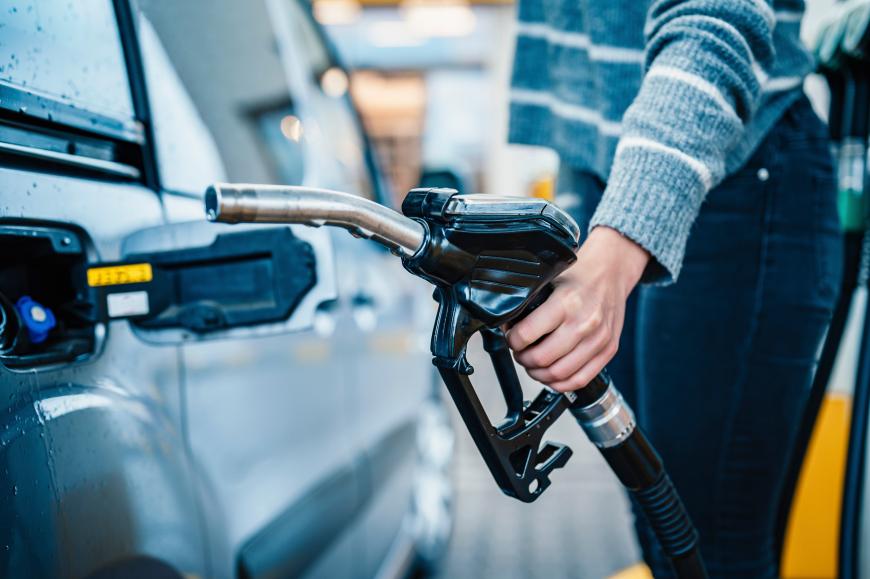
5 strategies to lower gas bills [no matter what gas costs]
Gas prices averaged near $5.00 a gallon in June 2022, then decreased significantly to $3.14 per gallon in December, 2022, according to AAA. Despite that drop in prices, events from the past two years — the pandemic, uncertainty created by the war in Ukraine, production cutbacks by oil producing nations, to name a few — are reminders that prices can spike unexpectedly. Here are five strategies to keep your spending on gas as low as possible, no matter the current price at the pump.
1) Get the best deal possible
Compare prices with a gas app. Gas prices can differ from one station to another, one part of town to another, and one state to another. Gas apps can identify the cheapest prices in your area and often have extra perks like prices for different fuel grades, traffic updates and discounts.
Research to find the best gas app for you, and avoid apps with a small number of downloads and/or bad reviews. One word of caution: while you might get a better deal at one station, be sure the fuel you consume getting there doesn’t offset the savings.
Take advantage of rewards programs. Use reward cards that gas stations, shopping clubs and some retail stores offer, which shave several cents from each gallon. The more often you purchase items at that gas station or store, the greater the savings you can receive.
Be sure, however, that your purchases at these stores are items that you normally buy and that you factor in any membership or annual fees. Otherwise, these extra costs will eat up any money you save on gas. NerdWallet provides helpful tips to determine if a rewards program is a good deal.
Workers whose side gigs require heavy automobile use and other frequent drivers might also consider a gas credit card that pays a percentage back on gas purchases.
2) Examine your driving habits
Drive calmly and steadily. Avoid aggressive acceleration and sudden braking. Fueleconomy.gov says that these two tactics can lower your miles per gallon by 15-30% on the highway and 10–40% in stop-and-go traffic. When you increase your speed, do it moderately where possible. When stopping or slowing down, reduce your speed gradually. Cruise control also consumes gas more efficiently.
Stay within the speed limit. Your vehicle’s gas mileage drops significantly when you drive more than 50 miles per hour, according to Fueleconomy.gov. Staying below the speed limit during extended trips on interstate highways can mean dramatic increase in fuel economy — up to 20% greater miles per gallon.
Refrain from prolonged idling. If you plan to stop for more than 60 seconds, Fueleconomy.gov recommends shutting off the engine to save money. You can adopt this practice, for example, every time you use the drive-thru for banking or picking up takeout. It usually takes more than a minute to complete a banking transaction or get your food order.
3) Use your car less
Carpool. Is there is someone you know who has a similar schedule, works where you do or close by, worships in the same faith community, goes to similar places to shop, has kids in the same activities, or is going to the same party or social gathering? Sharing rides will not only save you both money; it’s also a great way to include some social time in your schedule and catch up with friends and family.
Take advantage of mass transit. Taking a bus or train can be a cost-effective and environmentally friendly option. The cost of a transit pass or transit card can be more than offset by the savings in gas, parking fees and regular vehicle maintenance.
If you are a Minnesota resident living in the Twin Cities, visit MetroTransit.org. For transit options and intercity bus service in Greater Minnesota, check out the MN Department of Transportation’s website. If you don’t live in Minnesota, the American Public Transit Transportation Association has information about public transportation in your state.
Plan your trips. Every time you leave the house, be sure you’ve scheduled several stops before you return. This saves you both money and time.
Keep your car parked whenever possible. Take advantage of work-from-home policies and save on the gas you would use commuting. Decide whether a trip you plan to make by car is really necessary. Can you bike or walk to your destination? Can you combine your trip with others you plan to make on a different day? Are you making that trip to purchase something that you don’t really need?
4) Check over your car
Keep your car in good shape. According to Fueleconomy.gov, if you keep your tires inflated to the manufacturer’s recommended air pressure, you can get up to 3% better gas mileage. Repairing serious problems (e.g., replacing a bad oxygen sensor) can increase fuel efficiency by as much as 40%.
Keep items off the roof. Putting items on your car’s roof creates wind resistance and increases gas consumption. A 2020 study found that a roof rack with a carrier dropped a sedan’s fuel economy by 19% and an SUV’s fuel economy by 13%. If you aren’t using these items, remove them.
Check your gas cap. If your gas cap is off, broken or loose, gas will evaporate — up to 30 gallons a year, according to NerdWallet — and so will some of the money you paid for it. Make sure your cap is intact and screwed on tightly.
Pay attention to your miles per gallon. Most modern cars track fuel efficiency for you. If you have an older car, you can keep track of this information in a notebook after each fill-up. If your miles per gallon drop without a likely explanation (e.g., you’re now driving faster or more aggressively), this might be a sign that your car needs repairs or maintenance.
5) Rethink travel and vacations
Take in local attractions. Look at what your city, county and state offer for you to stay closer to home. By staying closer for recreation and vacations, you’ll reduce both what you spend on gas and servicing your car.
Visit transit-friendly destinations. If you are taking a plane trip, consider using city bus and rail for your ground transportation at your destination instead of renting a car. In the Minneapolis/St. Paul metro area, for example, an all-day pass for bus and light rail routes costs no more than $5 for an adult or child and $2 for people with disabilities. On the other hand, a recent NerdWallet survey of car rental companies estimated that the cheapest rental rate was $480 per week.
Want other ideas on how to cut costs? Our trusted, certified financial counselors will work with you to create a realistic budget and help you find ways to reduce monthly expenses. To set up a free, confidential appointment, call 888.577.2227, or get all your support online.

Co-author Mike Gude is a marketing & communications specialist providing support to LSS Financial Counseling employees.

Co-author Ashley Hagelin is a former senior program manager for LSS Financial Counseling.
